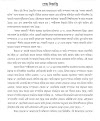Himanshu Ranjan Bhunyan
The recently released Assamese film ‘Bhaimon Da’ has emerged as a powerful cinematic tribute to legendary filmmaker Munin Barua, whose deep influence shaped the golden era of Assamese cinema. More than just a biopic, the film stands as a living chronicle of the cultural, social, and artistic identity of Assam’s film industry across decades. Affectionately known in the industry as Bhaimon Da, Munin Barua was not only a revered director and screenwriter but also a visionary who helped bring Assamese cinema to the forefront during challenging times. Written and directed by noted lyricist and young cultural activist Shashank Samir, and produced by Shyamantak Gautam under the banner of Zeal Creations, the film paints an emotionally resonant and historically rich portrait of Barua’s life and legacy. Munin Barua’s career began with the film ‘Bowari’, directed by Shiva Prasad Thakur, where his screenwriting first drew acclaim. From there, his work in landmark films like ‘Pratima’, ‘Pita-Putra’, ‘Hiya Diya Niya’, and ‘Nayak’ helped shape the narrative and commercial identity of Assamese cinema. ‘Bhaimon Da’ captures not only these professional milestones but also delves deeply into his personal journey—his early struggles, family life, creative vision, and enduring commitment to society and art. At its core, the film is a reflection on the broader challenges faced by Assamese cinema during an era dominated by Hindi films. With limited theatrical access and market support, regional filmmakers like Munin Barua, Jahnu Barua, Bhabendra Nath Saikia, and others fought to preserve the cultural identity of Assam’s cinema. ‘Bhaimon Da’ weaves these struggles into its narrative, touching upon key events such as the formation of Surabahi, the rise of CD piracy, VCD-era productions, and the changing political climate after the Assam Movement.
The film excels in storytelling by blending documentary-style realism with cinematic drama. Flashbacks are effectively used to traverse the different phases of Barua’s life, while the meticulously recreated sets—cinema halls, shops, and domestic scenes—bring alive the atmosphere of the 1980s and ’90s. One standout scene features a deserted, dust-laden projector room springing to life as bats fly out—symbolizing both decay and dormant potential.
Cinematographer Banshinathan deserves special praise for capturing the era’s aesthetic through nuanced use of light and color. Garima Saikia Garg’s costume design, grounded in period authenticity, adds further depth. The music—both songs and background score—complements the emotional tone of the narrative, underscoring scenes of hardship and triumph alike. The performances are another major highlight. Bandwip Sarma, in the role of Munin Barua, delivers a layered, heartfelt portrayal, capturing both the artist’s vulnerability and strength. Abhinav Bora shines as the younger Barua, while Yashasree Bhunyan, playing Manjula Barua, brings tenderness and quiet resolve to her role. The film features a large ensemble of over 360 actors, with veteran and emerging talents alike contributing to the realism and emotional resonance of the story. Supporting actors like Gunakar Dev Goswami, Pakija Begum, Nilim Dutta, and Partha Hazarika convincingly portray iconic personalities and family members, adding authenticity to the film’s tapestry. Brief roles by theatre owners, producers, and co-artists further anchor the film in the socio-cultural reality of its time. Though the film is a triumph, it is not without minor flaws. The repetition of drinking scenes across different timelines and the occasional use of modern slang in period-specific settings slightly disrupt the historical immersion. Still, these are small quibbles in an otherwise well-crafted film. In conclusion, ‘Bhaimon Da’ is more than a cinematic tribute—it is a heartfelt homage to Assamese identity and its resilient spirit. For younger audiences, it’s an introduction to a proud legacy; for older viewers, a nostalgic return to a golden age. This film ensures that Munin Barua’s vision will continue to inspire generations to come.























0 Comments